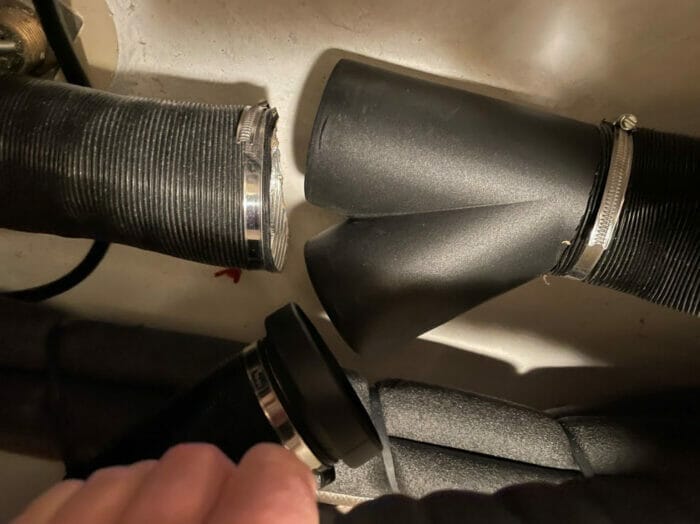
Member Tim Newson sent us the attached account of a serious situation that developed when several small oversights and maintenance failures came home to roost during a challenging early winter voyage across the North Sea—only Brits would think such a cruise might be fun!
…OK, I have done that sort of thing, too, but then I have a British passport and went to school there, so that tells you everything you need to know.
Anyway, Tim does a great job on the postmortem and lessons learned, as well as sharing the story of some good seamanship exercised in adversity that resulted in things ending well.
I highly recommend you take ten minutes to read Tim’s paper, you will learn a lot, as I did.
The only things I would add are:
- I don’t think dry powder fire extinguishers are a good idea in engine rooms, but there may be regulations in the UK that make my preferred option not available, and I’m certainly no expert on fire suppression agents, although I have written some thoughts.
- I would recommend installing a digital battery monitor on the boat, since I’m guessing from the account that they were using voltage to assess state of charge—very inaccurate, except on a battery that has been disconnected from all loads and charging sources for at least an hour.
- I have also ranted and raved about the need for windlass clutches and brakes and entirely support Tim on this.

I wondered why in 2016 our Marine Electricians (Enertec NZ) had wired the temperature sensor on to the body of our new 130A alternator using SS rigging wire, when it had been already glued on with a high temperature bonding solution. I guessed it was a cautious belt and braces approach and gave it no more thought.
Until now…!
A few things.
Battery temperature. since they had not been running heat and the water was cold, I’m betting the batteries were around 50F. 12.3V at 45-50F is very near full charge. Without knowing the temperature you do no have a full picture (also making assumptions about the load). 12.1V may have been 60-70% SOC, but the power becomes less useful to some instruments etc.
I would have liked to see a second means of charging. Solar, for example. Wind. I would also have avoided all power usage after the incident.
I have had that wort of failure (delivery trip of my PDQ). It was diring Christmas break, so yeas, cold. No instruments, you don’t need them. Pull up charts on the lap top or use paper, and use coastal navigation skills. No lights other than anchor at night. No heat. We’ve all camped out. Then the windlass would have worked fine.
CO2 powder. I think he meant dry chemical. Probably ammonium sulfate and ammonium phosphate. Not toxic, but irritating to breath. Also corrosive to electronics if allowed to get wet. I’d blow it out after cleaning first. Not a lot of fun without the right equipment. I agree, I would not use that for an engine compartment agent.
That sort of half-way duct installation is so common. Enough said. What a dumb reason for this misadventure. But at least it was diagnosed!
Hi Drew,
Good analysis. As you say, poor installation of that type is way too common.
When I go to open that PDF, I get the following warning.
You might want to look into that.
Hi Garryck,
Thanks for the heads up. Fixed now. We changed SSL plugins and this resulted in some PDFs being in our CDN cache with HTTP instead of HTTPS in the URL. Not a real security problem in that all other communications were secure because our server uses and forces SSL, but certainly worth fixing, thanks.
No worries.. I’m an IT tech myself, so I wasn’t really concerned about the security side of things. But having just finished sorting out some SSL hassles for my brother’s website, I figured you’d appreciate a heads-up about it.
Hi Garryck,
Yes, good to fix, if for no other reason, as I’m sure you know, than Google does not like finding HTTP URLs so it affects page rank. It was only that way for a couple of weeks, but good to get it fixed. Thanks again.